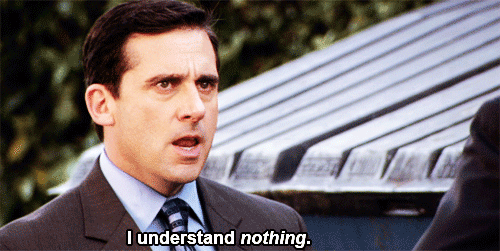GIF here, GIF there, GIFs everywhere.
From JLaw falling down on the red carpet repeatedly to King Joffrey dying in an episode of Game of Thrones, GIFs are fast becoming the most widely shared content online among Baby Boomers and Millennials.
To understand the rise of animated GIFs in pop culture, it is important to understand:
- what a GIF is,
- why they have become so popular in the visual content space, and
- how they can be beneficial in your marketing strategy.
Let’s start with what a GIF actually is…
In 1987, CompuServe created the Graphics Interchange Format (GIF) image file format and restricted it to only 256 colors. The file format could store multiple frames in a single image and was intended to be a portable, low-bandwidth image that could web browsers could easily render. At that time, GIFs brought animated movement to static webpages of the 1990s in an era before YouTube and Flash.
Today making a GIF is simple and available to the masses with the onslaught of user-friendly mobile apps, software and dedicated websites such as Reaction GIFs that make it easy for users to download, copy and share. Netizens are captivated by GIFs and genuinely want to create, receive and share them.
Why are GIFs so popular?
In order to understand why GIFs are so popular, we can turn to science.
First, our brain processes images 60,000 times faster than text. GIFs, like images, are visual, and our brain processes visuals much faster than text and other forms of written content.
Second, an image is usually easily understood at a glance. Humans pay special attention to faces – it’s hard-wired into our brains. Psychologists have shown that even babies like to look at faces. Don’t forget we look and see before we learn to speak or read.
And lastly, movement grabs our attention. In the caveman days, knowing where a potential threat was coming from kept us safe from predators. As a result, paying attention to movement has become instinctive.
How GIFs can Benefit a Marketing Strategy
Human beings process words in their short-term memory, which is limited by the number of items it can store (the magic number is 7 plus or minus 2).
Information in our short-term memory can easily be forgotten information if distracted. Images on the other hand, go directly into our long-term memory.

In the digital world where the average person sees 3,000 to 20,000 ads per day it’s becoming more important for marketers to break through the sea of sameness. Messages are better conveyed through visuals and animated GIFs are the happy medium between a single photo or graphic and a longer (and costlier) marketing video.
Tips for Creating Animated GIFs
Now that you’re familiar with human behavior and how GIFs can benefit your marketing strategy, here are a few tips to keep in mind when creating GIFs…
Entertain your audience. A personal story or anecdote, current trends, and comedy are all effective in capturing the attention of an audience so aim to entertain. Try using a Reaction GIF to convey an example of a positive customer experience or an Instant Replay GIF to entertain while communicating the benefits of your product.

Educate your customers. Transform data, infographics and graphs into GIFs to make our content more dynamic and compelling.

GIF with purpose. Avoid sharing GIFs that don’t align with your business objectives. Focus on creating content that will engage your customer while informing them of your business, product or service.
There are many GIF creation tools out there such as the desktop app GifCam and PICASION to help you create compelling animated GIFs. Try a few just in case the first one has a steep learning curve.
Once you’ve found the right tool, post your best work in the comments section below. I’d love to see them!




Leave a Reply